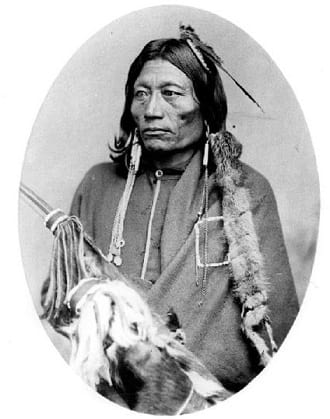
Apache Indian Facts
The Southwest desert area, which includes Arizona, Texas, New Mexico, and even the northern tip of Mexico, is considered home to the Apache Indians, also known as the Southwest American Indians. A small but separate band of Plains Apache also resided in parts of Oklahoma, and many still live there today. Today, approximately 30,000 Apache tribe members live in Arizona, New Mexico, and Oklahoma. They were nomadic Native Americans who relied heavily on hunting and gathering for survival in a desert region. Below are some key facts and important information on this tribe.
Click here for a great selection of Apache Indian books on AMAZONApache Indian Facts List
- Their primary source of food was buffalo, especially after the arrival of horses to assist them, but they also hunted deer, elk, turkey, fox, and other animals.
- English is spoken by nearly all Apache Indians today, yet many Apache also still speak their native language. There are two Apache languages, an Eastern Apache and a Western Apache, and within the language, there are several dialects. It's a complicated language to master due to various tones and vowel sounds.
- Although children began doing chores at an early age, they were still able to play like children today. They played with toys and dolls, and enjoyed playing games that kept them in good physical shape, such as archery and toe toss. They even began riding horses at the early age of five.
- Apache Indians were very religious and had many ceremonies centered around spiritual singing and dancing. They also spent a lot of time praying to spirits and gods, and believed that supernatural beings were everywhere.
- Two ceremonies took place for all children. One was held just after the baby outgrew the traditional cradleboard, and it involved cutting the baby's hair off in a haircutting ritual done by a medicine man. It was believed this would promote good health as the child grew up. In later years, haircuts were thought to bring bad luck so adults did not cut their hair. The moccasin ceremony was held at age two to ensure a favorable journey throughout life. New clothes and shoes were put on the child and the child was to walk in an eastward direction over a pollen trail.
- Apache women were responsible for all domestic life, including cooking, making clothing, taking care of children, gathering firewood, and even helping to defend their Apache village if attacked. They were also responsible for building the houses or shelters they lived in, called wickiups.
- Apache men were trained for combat and war at a very young age. They were warriors and hunters and some became chiefs and political leaders.
- Primitive Apache women wore clothes made out of buckskin, specifically dresses. They usually had long hair that was either worn long and free or was tied into a bun and sometimes fastened with hair ornaments called nah-leens. Just like men, the women wore warrior shirts often decorated with beads or fringe. Moccasin shoes or boots with beads were the standard footwear worn by both sexes.
- The men wore leather war shirts and breechcloths in the warm weather. In the cooler weather, they wore buffalo skin for warmth. The Mexicans eventually influenced their style of dress. They began wearing vests, white tunics, and more colorful clothing made from cotton.
- Storytelling is very important to the Apache Indian culture. Since they were not governed by any set of laws or rules and there were no jails for poor behavior, the Apache relied on passing down a code of conduct orally, from one generation to the next.
- The Apache were talented in arts and crafts. They were known for their beadwork, in which they used shells, glass, and turquoise. They would often sew good luck beads onto war shirts. Basket weaving is one of the Apache's oldest known forms of art. The burden basket and bread basket were the most common baskets. They also made jewelry, necklaces, earrings, and barrettes. Both sexes liked to wear shell jewelry.
- In the early 1800s, the relationships with the first white men to enter the region were solid. By the 1850s things had changed and as the Apache were being driven out of their homes and hunting and gathering was becoming scarce, raids and scalping began to take place.
- From 1849 through 1886, a series of armed conflicts, called the Apache Wars, took place between several Apache tribes and the U.S. Army. The wars were sparked when U.S. troops accused the great Apache chief Cochise of kidnapping a 12-year-old boy. Cochise denied the allegation.